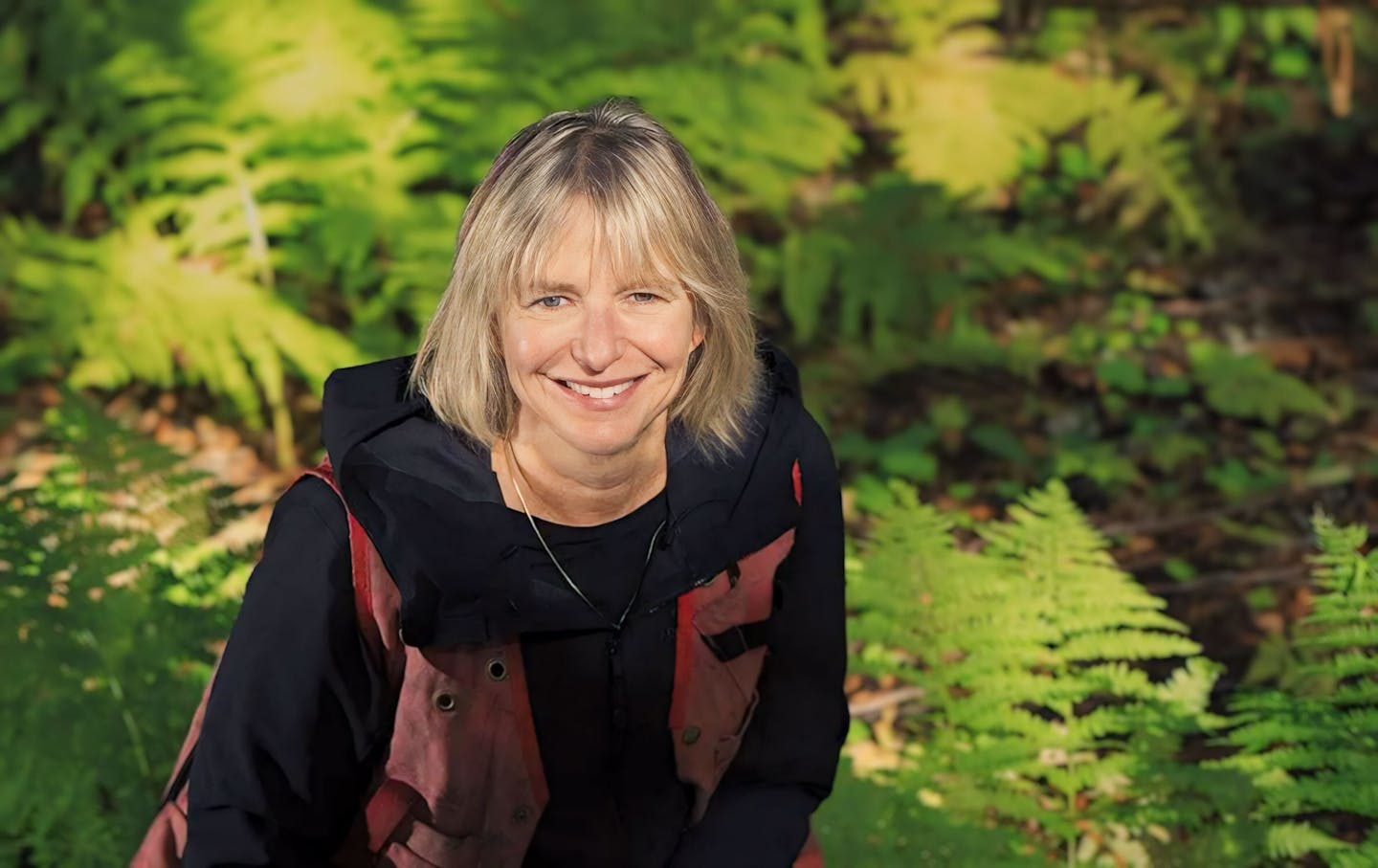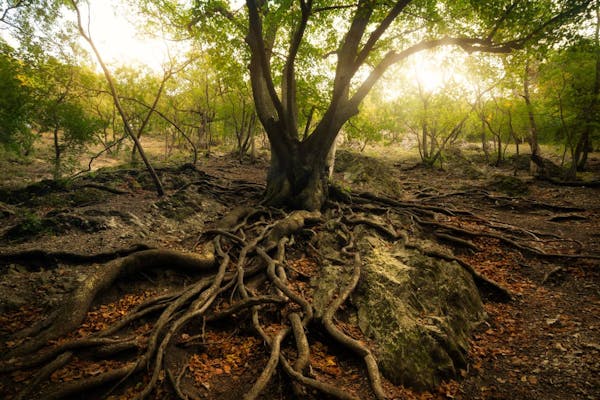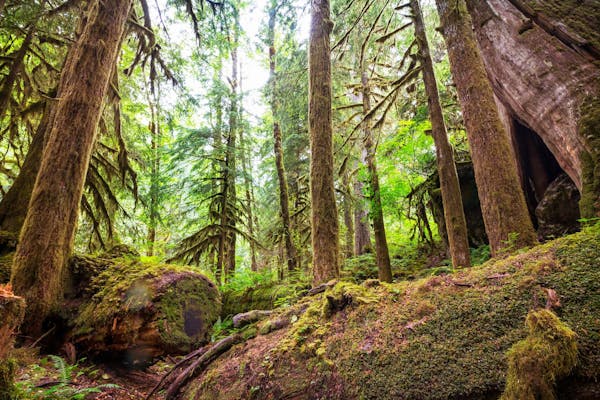How Suzanne Simard uncovered the secret conversations of forests
Each week, One Earth is proud to feature a Climate Hero from around the globe, working to create a world where humanity and Nature can thrive together.
Deep in the heart of forests, beneath the towering trees and the rich, earthy soil, lies a hidden social network. This is the realm where Suzanne Simard, a pioneering forest ecologist, has devoted her life to uncovering the intricate conversations between trees, a discovery that has profound implications for our fight against climate change.
A childhood rooted in the trees
Raised amidst the verdant landscapes of British Columbia, Simard's childhood curiosity was kindled by her family's deep roots in logging and her grandfather's teaching of the serenity that can be found among the trees.
When her family dog stumbled into a massive hole outside of their home in the woods, Simard saw firsthand the fascinating world underneath the forest layer by layer. It’s this curiosity that led her on a path to study ecology and discover what would challenge conventional forestry practices and illuminate the hidden interconnectivity of life.
Challenging forestry's flawed foundations
As an ecologist, one of Simard's first assignments was marking mature and old-growth (MOG) trees in British Columbia's forests for clear-cutting and replanting with fast-growing species like firs and pines. Common forestry practices felt these limited tree species wouldn’t compete with the older trees and would be best for profit.
Simard quickly recognized the flaws in a system that valued economic gain over ecological stability, as only planting one or two species causes forests to lack the necessary complexity for a healthy ecosystem.
Simplified forests become vulnerable to infection and with climate change being an issue, this creates a negative feedback loop for issues like mega-fires and insect infestations. Furthermore, removing other tree species did not promote the growth the foresters predicted.
She knew there was something deeper to how forests worked, so Simard decided to return to graduate school, where she became engrossed in why MOG forests are so powerful.
Unearthing the 'Wood' Wide Web
In her Ph.D. thesis in Forest Sciences from Oregon State University, Simard laid out how MOG forests have a symbiotic relationship with fungi. She discovered that trees release carbohydrates into the ground to provide fungi energy while the fungi create a vast network where trees communicate, share resources, and support each other.
Simard was able to demonstrate her theory using DNA microsatellites, showing that a birch tree could connect with a faraway fir tree. This research fundamentally altered science's perception of the forest as a competitive battleground to one of cooperative interdependence.
She dubbed this complex, subterranean network of fungi the "Wood Wide Web."
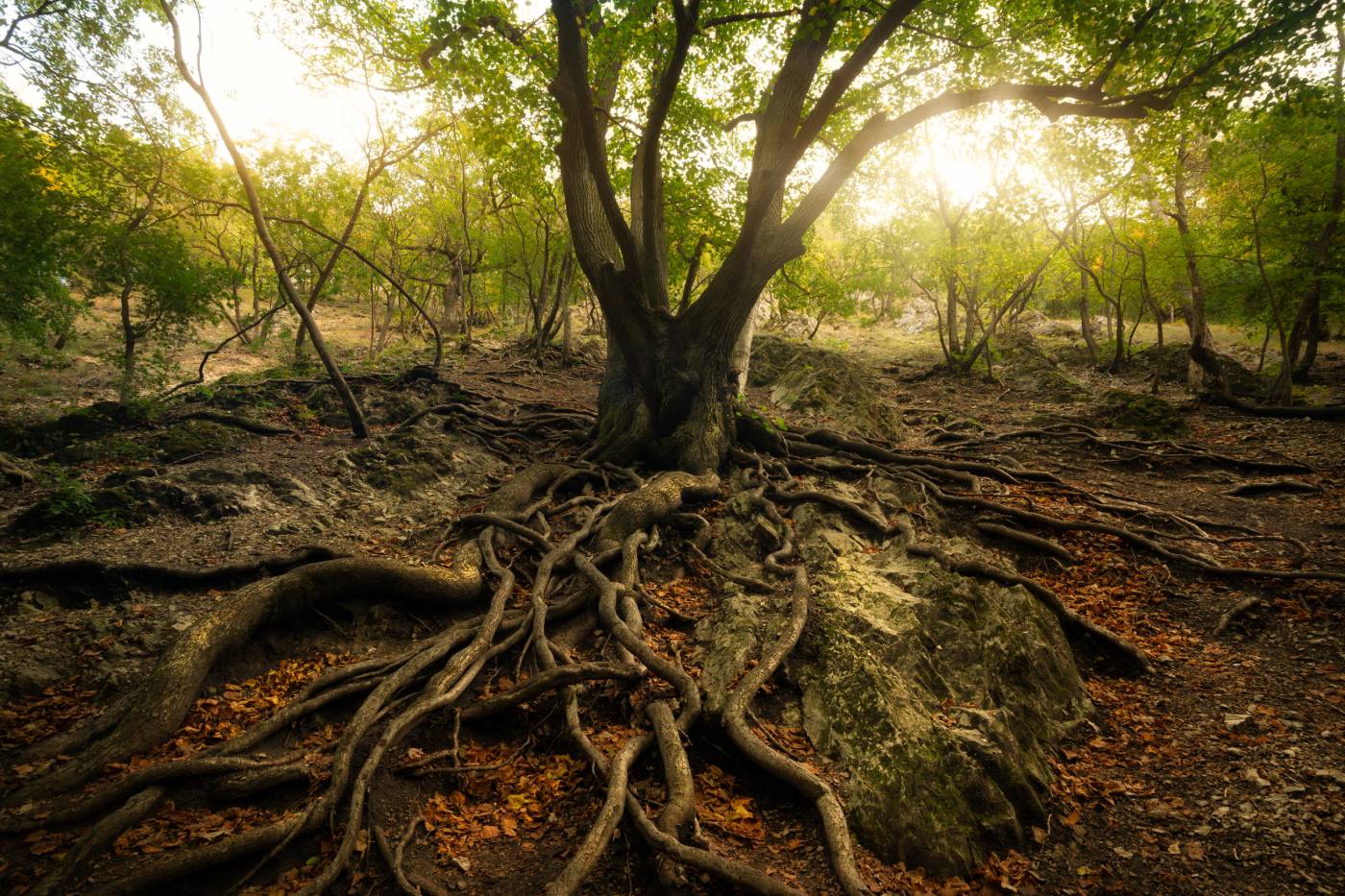
Suzanne Simard's work showcases all trees and plants in a forest are connected. Image Credit: Thomas Zsebok, iStock Images.
Finding the Mother Tree
Within the "Wood Wide Web," Simard also found a pivotal entity within the forest ecosystem, the "Mother Tree." These significant trees, the largest within the forest, serve as central nodes for extensive subterranean mycorrhizal networks. They play a crucial role in the forest's lifecycle by infecting seedlings with fungi and supplying them with the nutrients they need to grow.
In her influential book, Finding the Mother Tree, Simard articulates that trees have been communicating through this underground network for 500 million years. They share information through the fungi exchanging nutrients by sending hormonal, chemical, and electrical signals and connecting their roots.
But this groundbreaking discovery also came with a problem. This specific type of fungi is the most vulnerable to temperature rise, and climate change could ultimately cut off the flow of information between trees. Without this connection, the forests would die, having catastrophic effects around the world.
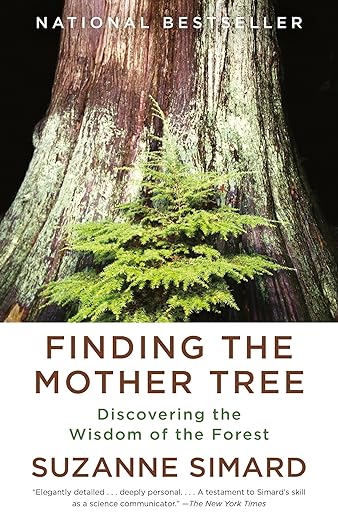
Suzanne Simard's Finding the Mother Tree. Image Credit: SuzanneSimard.com.
Enhancing forest resilience
In response to the Douglas fir forests of British Columbia still struggling to regenerate and the threat of climate crisis, Simard founded The Mother Tree Project which investigates forest renewal. Launched in 2015, her aim is to identify future forestry management practices that will help forests remain productive, diverse, and resilient as the climate changes.
This project is important because it will provide vital scientific data to guide the management of not only the Douglas-fir forests but also forests throughout the world as the planet warms. Without such data, all our forests are at risk of substantial decline in their capacity to sequester and store carbon. It also will provide information about biodiversity loss and clean water supplies.
Empowered by Indigenous knowledge
Integral to Simard's approach is her collaboration with First Nations Indigenous communities, whose understanding of Nature's reciprocity has deeply influenced her work. This fusion of scientific inquiry and traditional knowledge underscores a fundamental truth: our well-being is intricately tied to the health of our forests.
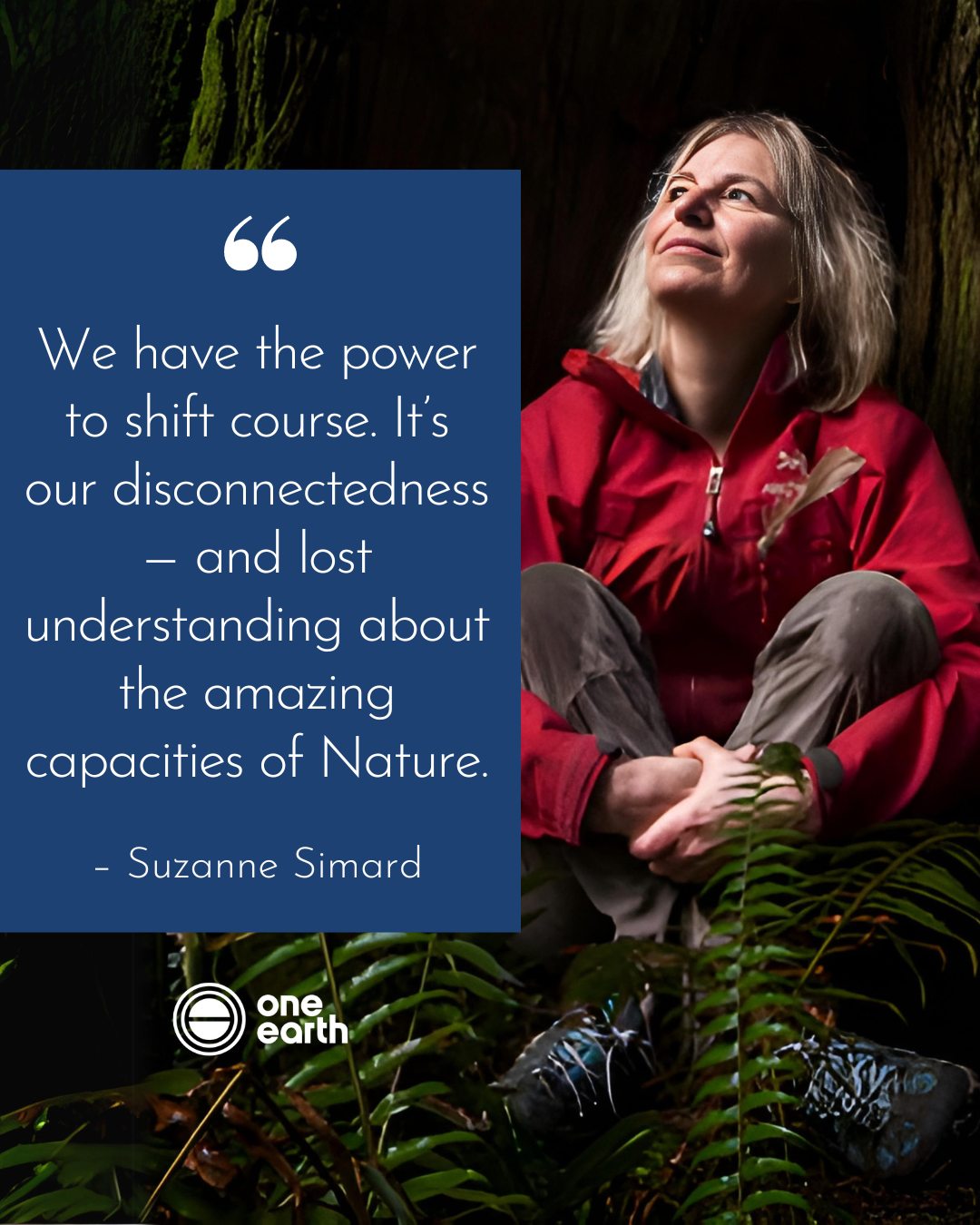
Suzanne Simard's research is guided by her deep connection to the land and her time spent amongst the trees. Image Credit: The Mother Tree Project.
Connecting with Nature as a climate solution
Simard has published over 200 peer-reviewed articles and presented at conferences around the world, including her TED Talk “How trees talk to one another.” Her insights into the communicative abilities of trees have not only advanced scientific understanding but have also ignited a broader conversation about our relationship with the natural world.
In a world yearning for climate solutions, her work demonstrates that the solutions we seek may lie in the very roots of Nature itself. That the power of observation and the importance of interconnectedness with Mother Earth may guide us toward a more resilient future.
Explore More About the Mother Tree Project